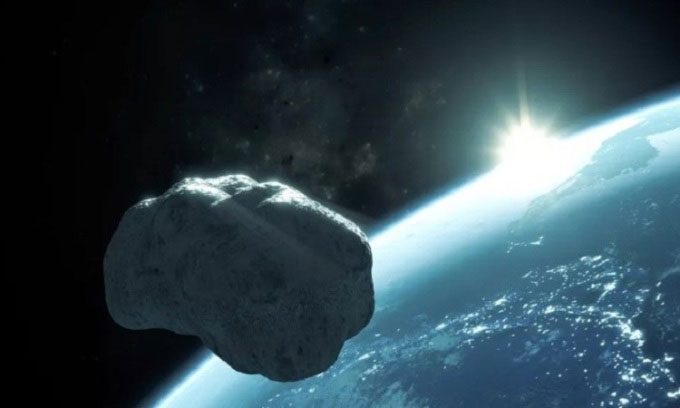After centuries of exploration, researchers have discovered that Earth has from 0 to many moons depending on the time period.
Earth appears to have only one moon. For millennia, we were unaware of any other natural satellites. However, through centuries of astronomical exploration and studies of the universe, researchers have identified hundreds of moons within the Solar System and many moons orbiting Earth, according to a report by Live Science on March 20.

Simulation of the mini-moon 2020 CD3 in orbit around Earth three years before it departed. (Photo: Stephane Masclaux).
The moon is a permanent solid satellite orbiting Earth, according to Gábor Horváth, an astronomer at Eötvös Loránd University in Hungary. However, this is not the only object captured in Earth’s orbit. A variety of near-Earth objects and dust clouds are also influenced by Earth’s gravity. Theoretically, these temporary satellites can be regarded as mini-moons, quasi-satellites, or ghost moons.
Thus, the question of how many moons Earth has is more complex than you might think. The number of moons fluctuates over time from 0 to many moons. In its early days around 4.5 billion years ago, Earth had no moons. Then, about 4.4 billion years ago, a large asteroid the size of Mars, named Theia, collided with Earth. Large fragments of Earth’s crust were ejected into space. They coalesced within hours, forming the moon, according to research published in 2022 in the journal The Astrophysical Journal Letters.
Other moons, typically a few meters in size, are often temporary, being captured by Earth’s gravity for a short time before escaping into space. In 2006, the asteroid 2006 RH120, measuring 6 meters across, remained in orbit for 18 months and was the first asteroid observed to orbit Earth for an extended period. 2020 CD3, a 3.5-meter-wide asteroid, left Earth’s orbit in March 2020 after functioning as the planet’s second mini-moon for three years. In 2020, scientists also discovered SO 2020. This mini-moon drifted back into space in early 2021. However, they realized that SO 2020 was not a natural moon but a remnant of a rocket stage from the 1960s.
Beyond the moons that enter and leave Earth’s orbit, there are many celestial objects that NASA refers to as quasi-satellites, such as the asteroid 3753 Cruithne. They orbit the Sun in trajectories so similar to Earth’s that they effectively accompany the planet in its 365-day orbit. The quasi-satellite Kamo’oalewa is primarily influenced by the Sun’s gravity but appears to orbit Earth in a manner akin to a corkscrew.
Some celestial bodies, such as the asteroid 2010 TK7, are referred to as moons because they are influenced by the gravitational forces of the Solar System—specifically, the Earth-Moon system. The gravity of these two larger bodies creates regions of centripetal force known as Lagrange points, which keep smaller objects stable at fixed points in space, according to NASA. The two Lagrange points are L4 and L5, forming an equilateral triangle with Earth. Objects captured at these Lagrange points are called Trojans and will join Earth’s orbit around the Sun.
According to Horváth, the Lagrange points L4 and L5 are gradually growing, starting to capture interplanetary dust particles. Some astronomers refer to this cloud of particles as “ghost moons.” They are also known as Kordylewski clouds, named after the Polish astronomer who first described them in the 1960s. However, ghost moons never become solid moons because the particles do not cohere. While the Lagrange points are always stable, dust particles frequently join or leave the cloud.





















































